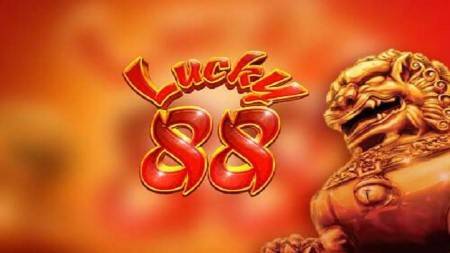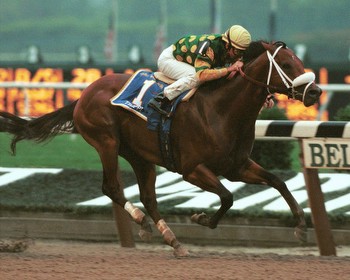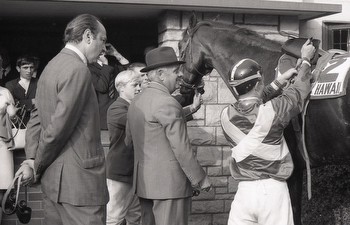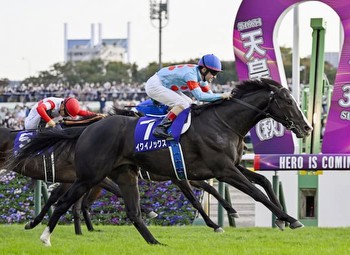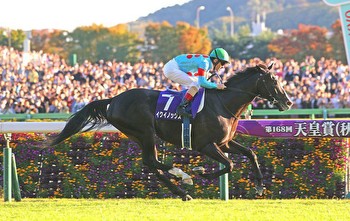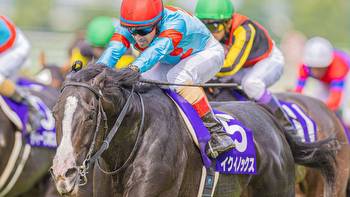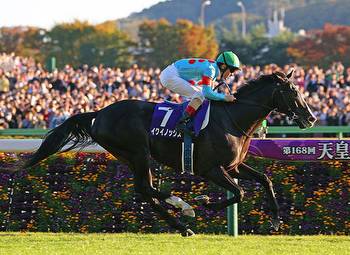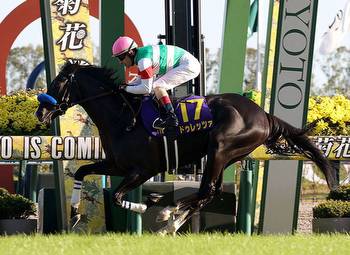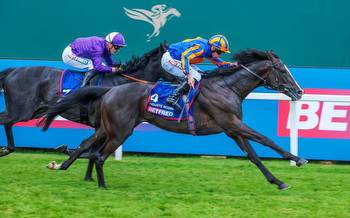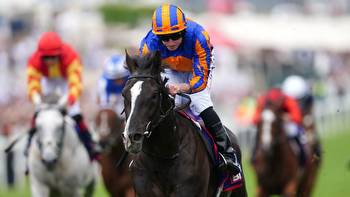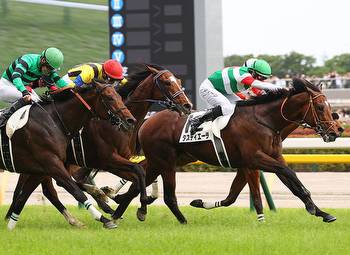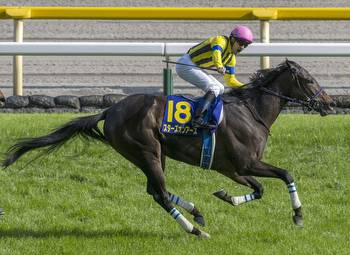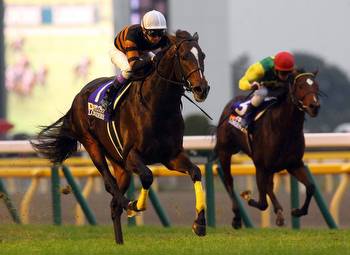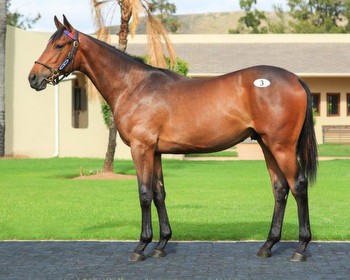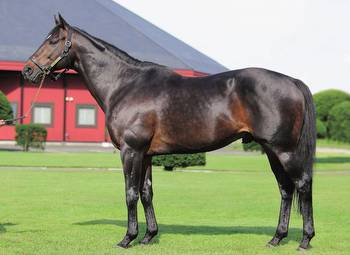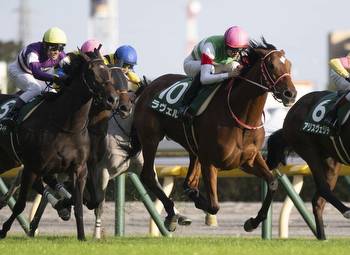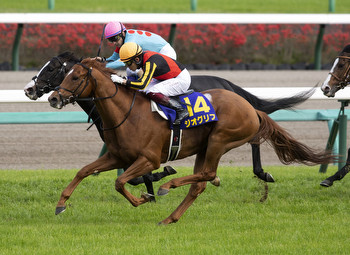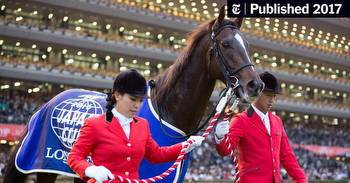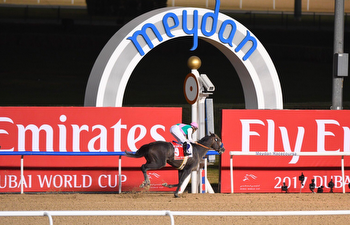Tracing pedigree of racing's new superstar Equinox
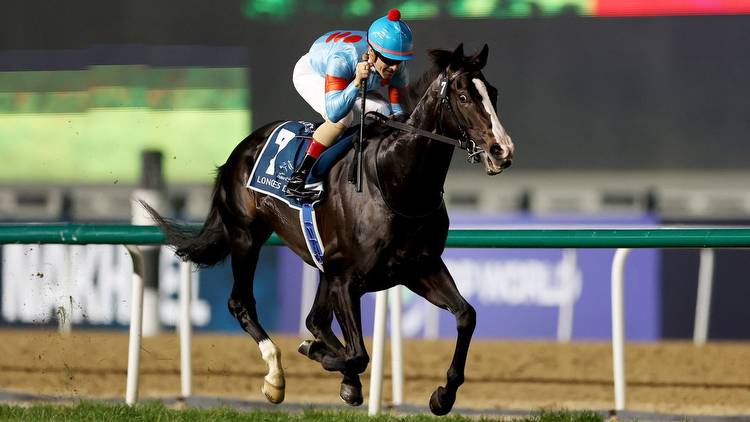
Dates of occurrence tend to be the latter ends of March and September and the term for this event is known as Equinox.
This year, the traditionally season-signalling event may just have been eclipsed by a different phenomenon with the same name, one that has most certainly ignited imaginations ahead of a completely separate type of season – the flat one.
The tranquil orbit the equine Equinox displayed traversing 12 furlongs around Meydan in the Dubai Sheema Classic last weekend smashed the course record and propelled him into international stardom.
OK, pausing the galactical references just for the moment (maybe) and delving into how racing’s latest celebrity came to be and what he is made of, we are going to skip back to the Champion 2YO in America of 1960, Hail To Reason.
Space helmets on, it’s quite the journey.
Winning nine of his 18 starts at two (yes, you read that correctly) including the Hopeful Stakes before a career-ending injury in September retired him to stud, Hail To Reason went on to be the sire of an outrageous 22 G1 winners from just 268 starters.
A notable influence both on turf and dirt, he is one of only five stallions to sire the winner of both the Epsom and Kentucky Derby (Roberto and Proud Clarion respectively), as well as the significant Travers Stakes winner Bold Reason – broodmare sire of Sadler’s Wells.
One particular son of Hail To Reason’s, however, is an exceptionally important planet in this alignment. That horse’s name is Halo and he just happens to share a grandam with Northern Dancer.
Halo was not quite as accomplished on the track as his celebrated cousin. He did win a stakes race on dirt but then switched codes and improved on grass in a career which culminated with a win in the G1 United Nations Handicap at five.
Beginning his stud career in Maryland, Halo delivered the four-time G1-winning champion filly Glorious Song (the dam of Rahy) in his first crop, followed by a Kentucky Derby winner and dual G1 winning champion juvenile in his next five crops. Majority shares in the stallion were sold and he was relocated to Arthur Hancock III’s Stone Farm in Kentucky as a 15-year-old.
This is where it gets good (maybe it’s already good actually.. gets better?). Halo’s first two Kentucky-bred crops produced winners of that state’s most illustrious races. They were seven-time G1 and Kentucky Oaks winner Goodbye Halo, and the eminent six-time G1 and Kentucky Derby winner Sunday Silence.
The significance here is that Equinox has inbreeding of 4x4 to Halo, and it is through those very two Kentucky Classic winners bred from his initial Kentucky crops.
Moral of the story - breed the best to the best and hope for the best? Not quite, there a couple more generational ingredients and a lot of Japanese intervention before we get the exact recipe for the current highest rated turf horse in the world.
Sticking with the sire line for now and returning to that Kentucky Derby winner Sunday Silence (also a reminder that turf G1 winners can sire dirt G1 winners).
Going on to win the Preakness, be denied the Triple Crown by his nemesis Easy Goer in the Belmont, but regaining top billing when beating him again in the Breeders' Cup Classic, Sunday Silence was infamously not desirable in the Kentucky breeding scene at that time and had to be sold to Japan.
We know the tale. An immediate success in his new home led to 13 Champion Sire titles and a re-shaping of the breeding landscape not unlike the one created by Sadler’s Wells in Europe. He sired 10 individual G1 winners the most prolific of whom is of course the Japanese Triple Crown winner turned eleven-time Champion sire Deep Impact.
It is not Deep Impact this story continues with though; it is actually his full-brother Black Tide.
A little more modest on the racing achievements front compared to his younger brother, Black Tide graced the winners’ enclosure on three occasions from 22 starts, his best day out coming at three when winning the Listed Fuji Tv Sho Spring Stakes at Nakayama (a trial for the Japanese 2000 Guineas). He was injured in the 2000 Guineas and after a two-year break, returned and remained in training until seven years old but never won again.
Distinguished family connections which also include being out of Wind In Her Hair (Alzao) - who was second in the Epsom Oaks to Balanchine - and stemming from the Height Of Fashion family (Nashwan, Nayef, and now Baaeed, et al.), earned Black Tide a place in the stallion ranks at Breeders Stallion Station in Hokkaido in 2009 (two years after his brother retired to Shadai Stallion Station).
Black Tide’s stud career began rather emphatically with a G2 winner and leading first-crop sire honours, while his third crop gave rise to a multiple G1 winner and dual Japanese Horse of The Year. That Horse of the Year has been Black Tide’s only G1 winner in 12 crops and 882 foals of racing age but it just so happens to be the seven-time G1 winning Champion Kitasan Black.
Nearly there, approaching landing.
Kitasan Black broke his maiden on debut in January of his three-year-old season and went on to win 12 of his 20 racecourse outings which included G1s ranging from 10 to 16 furlongs at three to five years.
He won the same Guineas Trial that his sire had won 11 years prior (note that this trial is over 9 furlongs as the Japanese Guineas is run over 10), the G1 Kikuka Sho (Japanese St Leger), the G1 Tenno Sho Spring-twice (run over two-miles and breaking the record time previously held by Deep Impact); the prestigious G1 Japan Cup, the G1 Arima Kinen, the G1 Tenno Sho Autumn and the G1 Osaka Hai.
He retired to stud for the 2018 season at Shadai Stallion Station and from his very first crop which comprised of 77 starters from 80 foals, has emerged Equinox (as well as G2 winner Gaia Force and Stakes winner Justin Sky), while his second crop of two-year-olds returned a pair of G3 winners from just 69 starters last year.
Those feats raised Kitasan Black’s fee from ¥4,000,000 (roughly €28,000) to ¥10,000,000 (roughly €70,000) this year, a move that seems justified by Equinox’s continued exploits at least, marking him as a seriously exciting young prospect amongst the Japanese battalion.
It is not just the sire lines that Japan has been purchasing and nourishing all these years however, as three generations of Equinox’s female family are Japanese bred.
Equinox is the third foal and second Group winner out of the G3 Mermaid Stakes winner Chateau Blanche who ran 25 times, and that sole black-type win was over 10 furlongs in June of her five-year-old season.
She is by King Halo, a son of the aforementioned Goodbye Halo (Halo’s initial Kentucky-bred G1 winner) and Dancing Brave – the Prix de l’Arc de Triomphe winner who was sold to Japan after five seasons at Dalham Hall.
Interestingly, both Equinox’s second and third dams are also by ‘Arc’ winners, Tony Bin and Alleged respectively. Widely craved Arc visit or not, those are seriously strong paper claims.
Without excessively beating on the Japanese-worshipping drum (although they do deserve it), it is difficult not to applaud their laser focus and long-term game plan while lamenting our own need for speed for which the opportunities simply are not there. One implicating yet important question has to be posed – would the dual G1 winner over two-miles Kitasan Black have been supported had he stood at stud in Britain or Ireland?
To finish where we began and go full equator - at least once per decade a star explodes into a brilliant burst of light in our galaxy, emitting maximum luminosity, one billion times that of the sun. This is known as a supernova. A supernova can also refer to an individual that explodes into prominence or popularity.
Still so lightly raced, Equinox won both of his starts at two which included the G2 Nisai Stakes. He was second in the Japanese Guineas and Derby last year prior to taking both the G1 Tenno Sho Autumn (over Panthalassa – this year’s Saudi Cup winner) and G1 Arima Kinen. And he began his 2023 campaign with a display of quiet obliteration of the field in last weekend’s G1 Sheema Classic.
Wherever this particular supernova goes next, we will be watching.
- Racecards
- Fast results
- Full results and free video replays
- Horse racing news
- Horse racing tips
- Horse racing features
- Download our free iOS and Android app
- Football and other sports tips
- Podcasts and video content
Safer gambling
We are committed in our support of safer gambling. Recommended bets are advised to over-18s and we strongly encourage readers to wager only what they can afford to lose.
If you are concerned about your gambling, please call the National Gambling Helpline / GamCare on 0808 8020 133.
Further support and information can be found at begambleaware.org and gamblingtherapy.org
